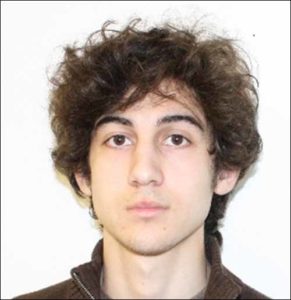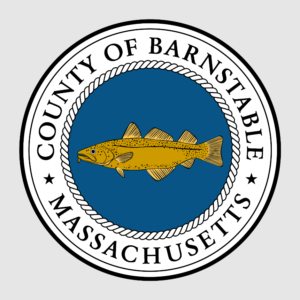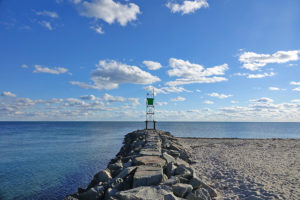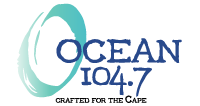 HYANNIS – Although most people may never have heard of aortic valve stenosis (AS), this condition afflicts an estimated 7 percent of the population 65 and older. Left untreated, symptomatic AS carries with it a significantly worse survival rate than metastatic breast, lung, colon and prostate cancers.
HYANNIS – Although most people may never have heard of aortic valve stenosis (AS), this condition afflicts an estimated 7 percent of the population 65 and older. Left untreated, symptomatic AS carries with it a significantly worse survival rate than metastatic breast, lung, colon and prostate cancers.
AS is the narrowing (stenosis) of the aortic valve, which restricts the flow of blood from your heart’s left ventricle to the entire body. The narrowing may be present at birth, or acquired over time as a result of rheumatic fever or radiation therapy. But most cases are directly related to aging, as calcium accumulates within the valve’s leaflets.
Over time, these leaflets become stiff, reducing their ability to fully open and close. As a result, the heart must work harder to overcome the restriction.
In most cases, severe AS has required open heart surgery to replace the diseased valve. Unfortunately, a growing number of patients are poor candidates for the surgery because of their overall frail health or other health complications that make the procedure too risky.
For many, that meant a virtual death sentence. Half of inoperable severe AS patients will die within one year and nearly 70 percent within two years, said Richard Zelman, MD, director of Interventional Cardiology at Cape Cod and Falmouth hospitals.
Today, that dismal prognosis is changing rapidly with the emergence of a new technology and procedure available to the sickest and highest-risk patients on Cape Cod and elsewhere. Transcatheter Aortic Valve Replacement, or TAVR, avoids the trauma of surgically opening the chest, dividing the breastbone and replacing the damaged aortic valve with a mechanical or biological one.
TAVR surgeons, known as “interventionalists,” enter non-invasively through a small needle hole, usually at the upper leg. They place a sheath, which is a small hollow tube the diameter of a pencil, in the femoral artery.
Guided by X-ray and ultrasound technology, the doctors then insert a catheter tube with a balloon on its end across the diseased valve. They briefly inflate the balloon to make room for the new valve to be inserted and expanded inside the old one. The new valve pushes the calcified leaflets aside and begins to immediately function normally, and will continue to do so for an average of 15 years.
The TAVR procedure typically takes less than two hours. What’s truly remarkable is that patients experience little if any pain; in most cases, they go home within 48 hours and resume normal activities in a week or two.
(Open heart surgical patients remain in the hospital for days and can take six to seven weeks to recover, often not resuming normal activities for six months.)
Dr. Zelman traveled to Germany to train for the TAVR program and bring the procedure to Cape Cod Hospital. There he worked alongside some of the most experienced TAVR surgeons in the world, including Markus Kasel, MD, of the German Heart Center in Munich.
Dr. Kasel, whose heart center has conducted about 2,000 TAVR procedures, later visited Cape Cod Hospital to conduct seminars for the TAVR team and observe the surgeries.
Cape Cod Healthcare is among the few community-based healthcare systems in the U.S. approved for TAVR, which means patients who are usually older and frailer can stay close to home for treatment, said Dr. Zelman.
Dr. Zelman sees TAVR as a critical and exponentially growing strategy. Approved by the U.S. Food and Drug Administration just four years ago, the number of TAVR procedures across the country is expected to reach 50,000 by 2018.
This trend line will be particularly important on Cape Cod, which has one of the oldest populations in the country, Dr. Zelman said.
“As a heart team, we now can administer to these patients such advanced levels of care . . . that are seen only in the finest academic institutions across the world,” he added.
“There’s an extraordinary diversity of population here; retired people who come here from all over the country and world,” said Philip J. Dombrowski, MD, an interventional radiologist at Cape Cod and Falmouth hospitals and a member of the TAVR team.
“They may be our neighbors or friends, and I think that’s important,” Dr. Dombrowski said.
“Now, we have the ability to replace their valves and really kind of rejuvenate them to be able to be far more active and improve what they’re able to do,” he added. “People here on Cape Cod live into their 80s and 90s. They don’t want to just be couch potatoes; they want to be active and they want to be out in the community. Many come from backgrounds that are extraordinary, and they still have a lot to offer in the community as well as with their families. It is very humbling to be able to offer them a better quality of life moving forward.”
























Speak Your Mind